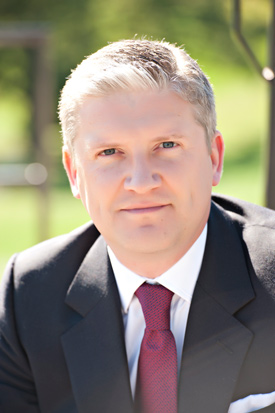Last month, a team of doctors at the University of Ottawa Heart Institute (UOHI), in partnership with their colleagues at The Ottawa Hospital Cancer Centre, successfully performed the country’s first completely non-invasive cardiac radio-ablation without incident. Using technology pioneered by physicians and scientists at Washington University in St. Louis, MO, USA, the Heart Institute is now believed to be one of the only centres in the world capable of performing this completely non-invasive procedure to treat heart disease.
“We have started to treat patients suffering life-threatening arrhythmias completely non-invasively, by combining radiotherapy normally used in the treatment of cancer with new non-invasive electrophysiology techniques. Patients experience little or no pain, and it eliminates the need for hospitalization,” explained Dr. Calum Redpath, cardiac electrophysiologist in the Division of Cardiology at the UOHI, and leader of the project.
Currently, the procedure is so new it is only available on a compassionate basis, suitable for patients who are unable or unwilling to pursue further aggressive conventional treatments for ventricular tachycardia, a potentially fatal heart rhythm disorder. Often, these are patients living independently at home taking powerful drugs and yet still suffering from repeated painful defibrillator shocks.
This new technique offers patients a treatment option that does not require the body to be opened in any way
- Dr. Calum Redpath, cardiac electrophysiologist, UOHI
“This new technique offers patients a treatment option that does not require the body to be opened in any way,” said Dr. Redpath, adding, “It’s a real game-changing innovation, almost a fairytale.”

Radio-ablation effectively combines two novel techniques in the worlds of radiotherapy and cardiology: electrocardiographic imaging, which allows doctors to characterize and map the electrical activity of the heart using advanced imaging technology; and cardiac radiotherapy, which allows a radiation oncologist to essentially “burn off” damaged areas of the heart muscle with targeted radiotherapy. Efficacy appears to be in the range of 94-99% reduction in arrhythmia burden with no significant reduction in cardiac function and only minor inflammation noted thus far. The procedure can be done in a one-hour appointment.
“It’s a painless treatment. The patient is fully awake, fully conscious,” said Dr. Andrew Crean, co-director of the cardiac MRI service at the UOHI, and part of the institute’s radio-ablation team. Dr. Crean works in tandem with Dr. Redpath to identify damaged heart tissue causing the arrhythmias.
A ventricular tachycardia mapping study determines where and how the arrhythmia occurs, before Dr. Graham Cook, a radiation oncologist at The Ottawa Hospital Cancer Centre, can target the radio-ablation.
“We’re excited to use this treatment now on portions of the heart, with the hope that with just one 30-minute treatment our current patients will live longer and eventually contribute to research studies so we can learn more about who can benefit the most from this and by how much,” said Dr. Cook.
“These innovations would not be possible without the generous support of our community, as well as our partners at The Ottawa Hospital, The University of Ottawa Heart Institute Foundation, and from financial considerations wholeheartedly donated by the R. Howard Webster Foundation and Cynthia Baxter and Family,” said Dr. Thierry Mesana, president and CEO of the University of Ottawa Heart Institute.


